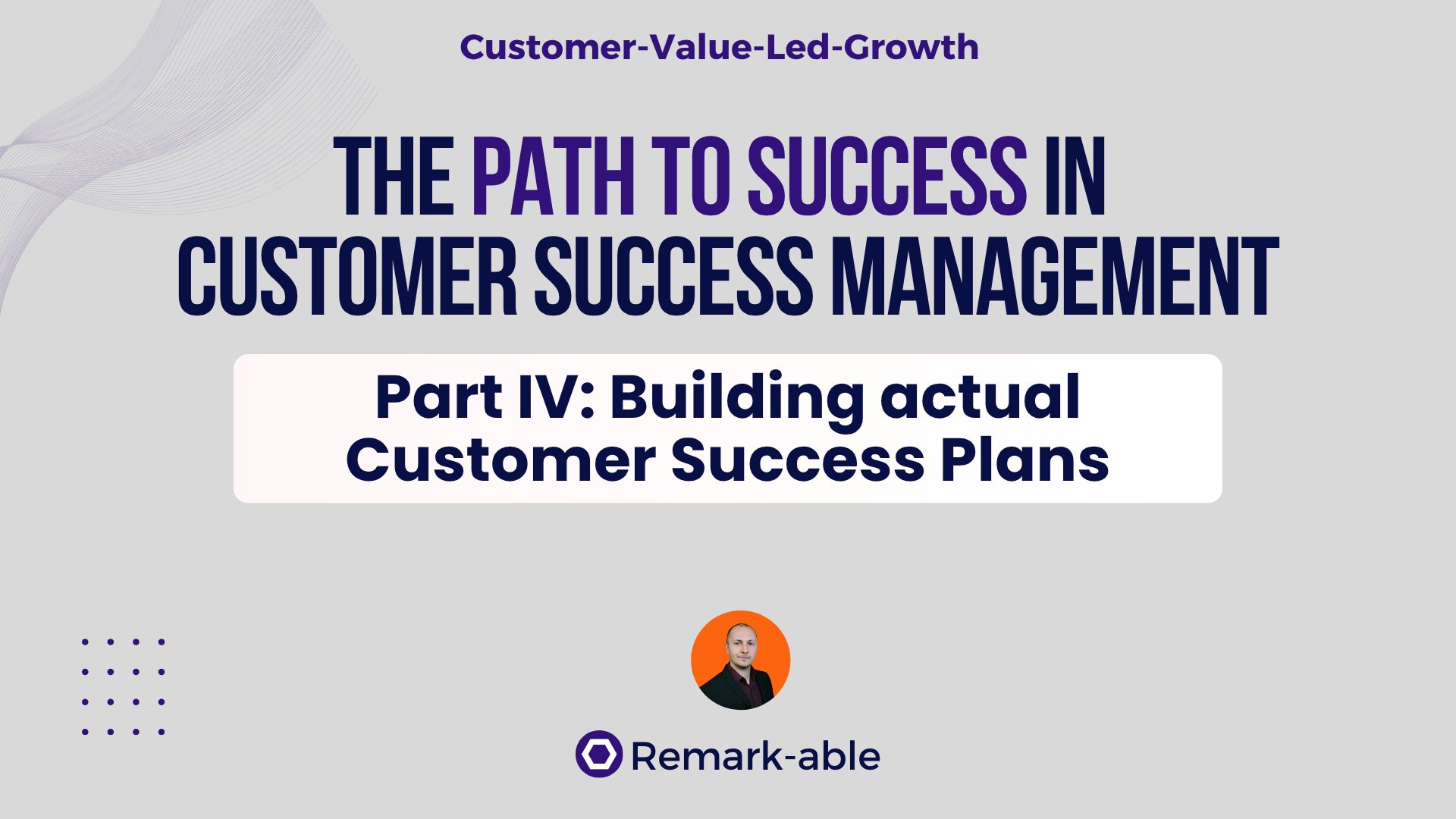
Hi, Markus here. Welcome to a new episode of the Customer-Value-Led-Growth Newsletter.
I share strategies and guides to help you become a proactive CSM, deliver more value for your customers, and turn it into revenue for your company every week.
Want to show your true potential to your leadership? Check out these resources 👇
It’s an age-old proverb: Failing to plan is planning to fail. Hundreds of years later, it has not lost its accuracy. Customer Success Management is not an exception.
Do you know what your customers do when you are not in the room? Do they know what they are supposed to do when you are not in the room? Let’s be honest, for most CSM teams, the customer journey is just a big black box.
If they are lucky, they occasionally get a peek inside. Namely, when customers are attending their QBRs (which is far from guaranteed), and the journey is actually reviewed.
Speaking of, if you have actual customer success plans in place, the insights from the QBR will either confirm them or uncover necessary changes to them.
But first things first. In today’s episode, I’ll show what traditional customer success plans are missing and how to build better ones.
The Flaw in the Plan
The idea of building Customer Success Plans is not new. Many CSM teams already have something in place that is supposed to give them orientation. Whether they are sitting in a spreadsheet, Notion table, etc., they are often looking like this 👇

Do you see what’s missing here? Spoiler alert: There’s not a single word or clue on how customers are supposed to overcome their challenges and accomplish their objectives. This is not a customer success plan; it’s a use case documentation.
The only circumstances under which this would work were if customers had all the skills and knowledge to succeed on their own.
Yes, you might have some of these in your portfolio. Customers who require zero inputs from your side. Heck, it’s them who can teach you a thing or two.
But unless your company sets the bar to qualify for your product incredibly high (it’s quite the opposite), that’s not the case. But how could you be of help if you don’t know the journey they have ahead?
Building a Roadmap
An actual customer success plan is something different. It’s a breakdown of the gap your customers need to close. The gap between their status quo and their desired outcomes (as determined at the initial discovery).
Here’s how I like to break it down to make it actionable (customer success happens bottom up), but not lose sight of the big picture:
Milestones to achieve: Accomplishing your customers’ goal is the sum of achieving a sequence of partial or intermediate goals
Problems to solve: To accomplish each of these goals, customers need to solve different problems
Tasks to complete: Solving a problem requires customers to take specific actions in the appropriate quality
Skills and knowledge to acquire: To create inputs of the right quality, customers require a set of abilities and capabilities
Inputs required: To enable your customers with the right competencies, you must provide targeted education and training.
If you are following this structure, you create
a high level of visibility - you and your customers know where they are and what comes next at every point of the journey
a lot of potential touchpoints - you can evaluate progress with every single task and pin down shortcomings exactly
accountability for both sides - you provide the right inputs at the right time, and customers are doing the work in the right quality and in the right order
and it immediately becomes much harder to fail. However, as initially outlined (QBR), you need to review your success plans periodically. Because they are built on the information you’ve had in the beginning.
This information may turn out to be wrong or incomplete. And if it’s not, it’s changing over time. New problems emerge. Customers require additional training. New people come on board.
Your customer success plans are living organisms. Treat them accordingly 😉
